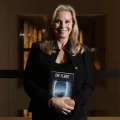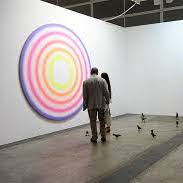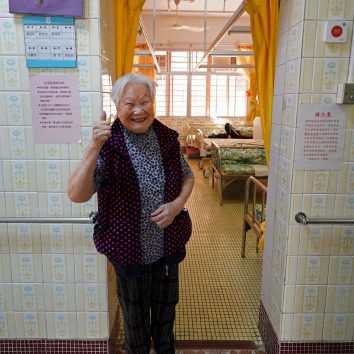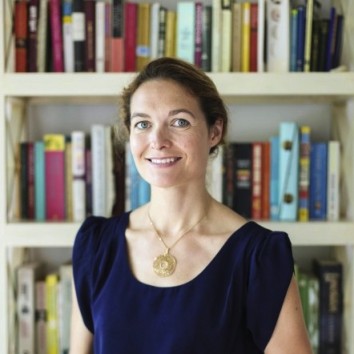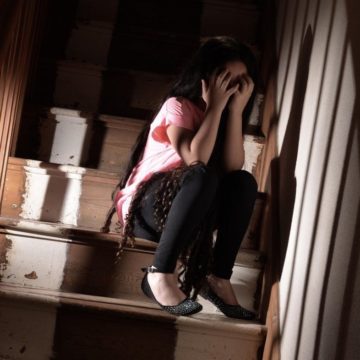
Childhood trauma is a complex beast
— August 17, 2019
- Developmental trauma is a term used to describe childhood trauma such as emotional abuse, physical abuse, sexual abuse and exposure to violence
Kim Barthel is the kind of person I’d want to be sitting next to in a bunker when the bombs are raining down outside. She exudes warmth and kindness, the kind of energy that could be wrapped around anyone in need.
The Canadian occupational therapist has been travelling to Asia to teach for 12 years and was back again this summer to spend a couple of months lecturing in Hong Kong and China – only this time it was different.
“This is the first time I’ve been able to use the words ‘developmental trauma’ in a way that connected to people. Before I would have couched it differently, perhaps calling it ‘mental health across the lifespan’, but there’s been a big shift. People are hungry for something that makes them feel compassion and connection,” Barthel says.
So, what exactly is developmental trauma? It’s a term used to describe childhood trauma such as emotional abuse, physical abuse, sexual abuse and exposure to violence.
“It can be a cocktail of those things. We now know that different forms of exposure to danger have different impacts on the developing brain and all your neural chemicals are affected differently by the soup of your exposure,” Barthel says.
Sexual abuse might be a taboo topic, but it still tends to command most attention when it comes to childhood trauma.
Barthel teamed up with Canadian ice hockey player Theo Fleury to write Conversations with a Rattlesnake: Raw and Honest Reflections on Healing and Trauma(2014), a book about the National Hockey League legend’s struggle with alcohol and drug abuse after years of sexual abuse by his coach.
The book was written over the course of two years when he was receiving almost daily therapy sessions; Barthel says her favourite chapter is the one titled “Shame Revisits”, about sexual abuse.
“Sexual abuse is the most unspoken, shame-based form of abuse and also one of the most common, and the way we frame it makes it so relatable that people feel they are capable of connecting to that conversation,” she says.
Fleury had previously thought that the sexual abuse was the primary cause of his addictions, but during therapy he came to realise that his mother’s chronic depression and his alcoholic father’s unpredictable and violent behaviour had left him with early childhood development trauma.
“This is a cocktail for high levels of stress – the brain is left in a highly sensitive place of dysregulation,” Barthel says, referring to when a person can’t control or regulate their emotional responses.
Sexual abuse if often thought of as the worst kind of abuse, but she says chaos can be even scarier for a child. There is increasing recognition that less dramatic experiences can cause significant damage.
Take the teacher who says to a student – “You are stupid and will never amount to anything” – that can lead to a lifelong legacy of developmental trauma, says Barthel.
She points to the American psychiatrist Dr Bruce Perry, senior fellow of the Child Trauma Academy in Texas, whose research found that children exposed to domestic violence have better mental health outcomes than children who are abused directly.
Barthel began her career as a therapist working with children with autism. She then became a specialist in working with movement systems, how the body works, and worked in the 1990s in an orphanage in Kosovo as a movement instructor supporting children with severe developmental trauma. She then moved to the Canadian Arctic, which has high levels of sexual abuse and genocide, and worked with Inuit children.
Today, she and her husband, Bob Spensley, run the company they co-founded – Relationship Matters – which governments and agencies around the world contract to develop services for people at risk.
While these tend to be big projects from Uganda to Indonesia, in Hong Kong Barthel was giving workshops for those “in the trenches” – the mental health professionals, teachers and parents who work with adults and children who have experienced trauma.
Barthel’s work combines an understanding of emotional development, physical development and neural biology. Trauma is a complex beast, but she is good at unpacking it, deciphering complex theories and translating them into practical advice and solutions.
What has made her work easier – at least in terms of explaining it to others – is functional magnetic resonance imaging, or functional MRI (fMRI), which is able to show what chronic stress does to the brain.
“Children who are developing their brain … when they are exposed to high levels of criticism, disgust, pressure – we can see that that is not helpful,” she says with obvious understatement.
Barthel knows about the high academic pressure which many Hong Kong schoolchildren face.
Children respond differently to that pressure – some will light up and be motivated to learn, but those going through the motions to please someone else will have high levels of cortisol in the brain, Barthel says.
Cortisol can alter the brain and decrease memory, which is an obstacle to learning.
Working in Singapore, Barthel says she’s seen a strong sense of compliance to participate in a particular way that is a fallout of stress.
“Compliance of course creates connection, but if it goes over the edge into danger, then you are holding all that stress without the ability to express it, and that’s when it becomes not helpful to your physiology,” Barthel says.
Barthel grew up under that kind of academic pressure – her parents pushing her to be a high achiever – and says she understands parents are often driven by their own fear.
“It’s a fear that ‘my kid isn’t going to survive in this environment, they won’t be OK unless they get good grades’,” Barthel says.
Her approach isn’t about blaming parents – or blaming anyone. It’s about people doing the best with what they can.
“If the parent is not capable of putting their mind in the mind of the child, then the child is left dysregulated, in a constant state of struggle, and they don’t learn the ups and downs of soothing themselves. This can lead to long-term mental health outcomes,” she says.
Building ties that bind
The way that parents interact with their baby during the first few months of its life largely determines the type of attachment it will form with them. Securely attached children are better able to regulate their emotions, feel more confident in exploring their environment, and tend to be more empathetic and caring than those who are insecurely attached, Barthel says.
Parents who are distant or intrusive cause their children considerable distress and children react to this by building defensive attachment strategies. Research from the University of Denver shows that about 60 per cent of people have a secure attachment, while 20 per cent have an avoidant attachment, and 20 per cent have an anxious attachment.
Barthel says that adults who didn’t form a secure attachment tend to fall into one of two categories: either they are self-reliant and don’t ever ask for help, or they are so self-focused that they can’t put themselves in the mind of another person because their pain is so big.
So, what to do if you recognise that as a child you didn’t form a secure attachment? Barthel has a few suggestions.
1. Find a person who is present
Having a present, available person can completely change your nervous system. Attachment can only happen in the context of a relationship. That need not be a life partner, it could be a friend or therapist – it could even be with your dog.
The 2012 documentary Dolphin Boy is about a young Palestinian boy in Israel who has significant post-traumatic stress disorder after an attack that leaves him mute. With the support of his psychiatrist, he develops a relationship with a dolphin that completely changes his life.
2. Ask for help
Many people don’t feel safe enough to ask for help. The capacity to seek out someone and say, “This is really hard for me” is the beginning of a shift towards recognition that you are suffering. If you are able to recognise that you are suffering you are halfway there.
3. Hurt people, hurt people
Many people who are traumatised externalise their trauma onto others without knowing that they’ve done that. Something that can help a person become more secure is for the person to reflect on the impact they are having on those around them by asking, “Was that comfortable or uncomfortable?” That kind of thinking brings a person more into a realm of self-awareness and has a cumulative effect over time.
Original Link: SCMP
